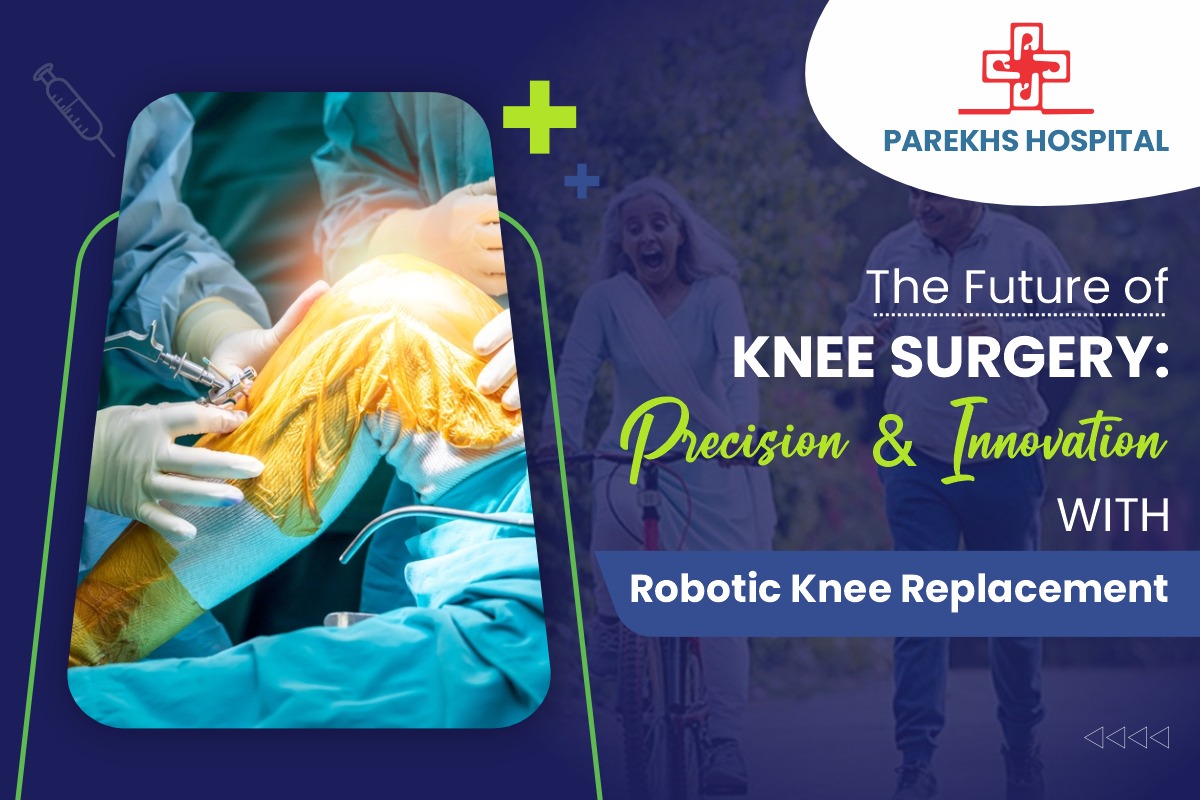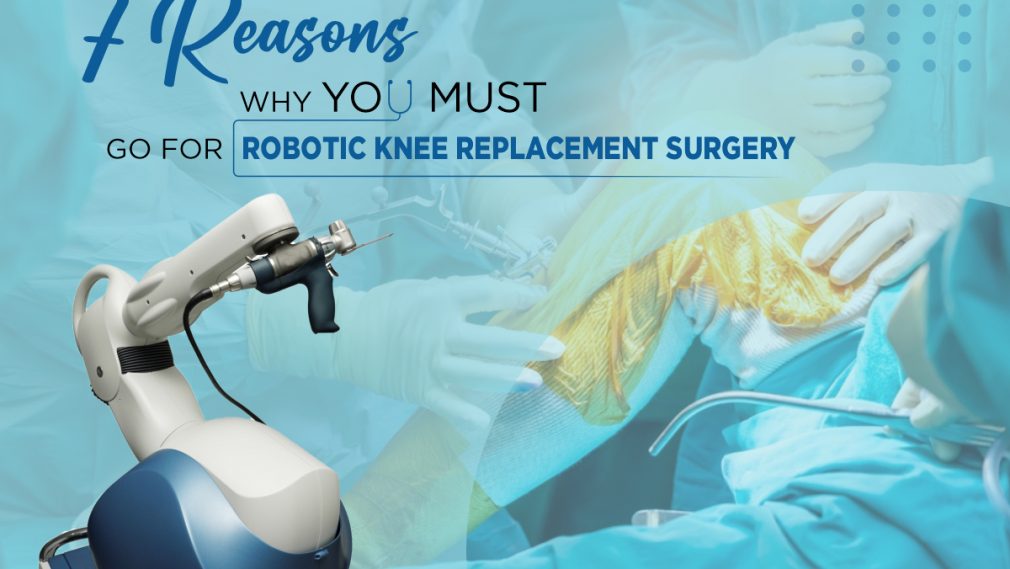The Future of Knee Surgery: Precision and Innovation with Robotic Knee Replacement

Are you suffering from consistent knee pain, but scared to undergo knee replacement surgery? Then you are reading just the right piece of medical information. Today we are here to share that the Robotic knee replacement has already arrived making the patient care pain free as well as faster. So rather than asking, ‘Is knee replacement surgery safe for me?’ you should actually be searching ‘How long is the robotic knee replacement recovery time? ‘What is after robotic knee replacement care?’ ‘What is the Robotic knee replacement recovery time?
And there is just one common answer to all of the above: You are living in an era where even the Future of Robotic knee replacement has arrived with more precision and innovation, making it FASTER, CHEAPER, with QUICKER, PAIN FREE RECOVERY! How does it all happen? We are sharing the exact details below….
Recent Innovations in Robotic Knee Replacement
Though these are all interlinked, as these are essential steps of Robotic Knee Replacement Surgery, yet we are sharing all.
1. Customised Implants and 3D Printing
In recent years, 3D printing has changed how we create implants not just for current, but also for future robotic knee replacement surgeries. With this technology, doctors can now make implants that fit perfectly to every patient’s knee. In 2024 alone, studies have shown that surgeries using customised implants have a 20% faster recovery rate compared to traditional methods. As a result, patients have a lower chance of issues like implant misalignment. This personalised approach helps the patient move back to normalcy very fast.
2. Robotic Assisted Surgery
Doctors here use robots to plan every detail of the surgery. This helps them make exact cuts and place the implant in the perfect position. Because of this, patients are less likely to face problems like joint instability. The precision of robotic systems reduces pain, as well as robotic knee replacement recovery time. According to a recent medical report, patients undergoing robotic knee replacement surgery experience 15% less pain. There is also a 25% faster return to daily activities.
3. Minimally Invasive Techniques
Robotic knee replacement surgery uses smaller cuts. In simple words it means less damage to the tissue, bone etc thereby ensuring a quicker recovery. In 2024, data showed that minimally invasive robotic surgeries reduced hospital stays by nearly 30%. After robotic knee replacement care, this has made patients faster pain free and independent compared to traditional knee surgeries.
4. Advanced Pain Management
With robotic precision, there’s less tissue damage. This results in less inflammation and lower levels of postoperative pain. In addition to this, there are also advanced pain management techniques for after robotic knee replacement care. These include nerve blocks and targeted medications, helping keep patients comfortable during recovery. This reduces the need for strong painkillers like opioids; less risk of side effects and dependency on medications.
What’s Next in Knee Replacement?
Advancements like AI-driven surgical tools, biodegradable implants, and regenerative medicine are revolutionising robotic knee replacement, thereby promising a more personalised and less invasive option.
1. Regenerative Medicine
Regenerative medicines are building the future of robotic knee replacement surgery very fast. It focuses on self-healing of the body, particularly the cartilage in the knee. Cartilage usually doesn’t grow back on its own, but new treatments in 2024 are showing that it can be repaired within six months. This means that some people might not need a full knee replacement. This new approach could help delay or even prevent knee replacement surgeries.
2. AI and Machine Learning
With Artificial Intelligence (AI) and Machine Learning (ML) we are already into the ‘Future of Robotic knee replacement.’ It is already making robotic knee replacement surgery smarter. How? It helps doctors plan surgeries better by analysing a patient’s data to find the best way to perform the operation, as per his vitals and body demand. Plus, AI is used with robots to make surgeries more accurate, reducing mistakes and speeding up robotic knee replacement recovery time. If that was not enough, it can also predict issues that can arise in future as per test reports analysis, even before such issues arise. This makes the surgery safer and reduces after robotic knee replacement care.
3. Biodegradable Implants
Biodegradable implants are a new and exciting part of the future of robotic knee replacement. These implants dissolve in the body over time. In simple words it means not using steel implants but dissolvable ones; so you may not need another surgery to remove or replace them. But in 2024, doctors are still testing these implants to see how well they work. Early results show that they help bones heal naturally. It will then reduce problems like infections or the body rejecting the implant. This could make after robotic knee replacement care easier and safer.
4. Sensor-Integrated Implants
Sensor-integrated implants are like high-tech tools inside your knee. These implants have sensors that can check how your knee is doing after robotic knee replacement surgery. They monitor things like movement and pressure in the knee, sending this information to your doctor. In recent times, the research is focusing on how these sensors can help catch problems early. For instance, what if the implant starts to loosen. This technology can also be used to customise your rehab program. This is making sure your after robotic knee replacement recovery time is as short and effective as possible.
How Can I Be Sure of the Effectiveness of Robotic Total Knee Replacement?
There are various ways you can judge and scan a robotic knee replacement surgeon or hospitals to gauge its effectiveness after the surgery:
1. Start by looking at the success rates. This can be done by checking the surgeon/hospitals’ reputation and accreditations
2. Patient reviews and follow-up studies can also offer valuable information.
3. Check with friends who have undergone robotic knee replacement in your city or country
4. Lastly, if you have already undergone the robotic knee replacement, and you are pain free, independent in your walks in less time, then in that case you have undergone an excellent robotic knee replacement.
If you wish to know more about how your own knees and body will respond to robotic knee replacement, you must consult a robotic knee replacement specialist today. This will help you pick the correct plan for your safer robotic knee replacement surgery. To ensure that you reduce your own robotic knee replacement recovery time, you must consult only the best robotic knee replacement hospitals in your city!






